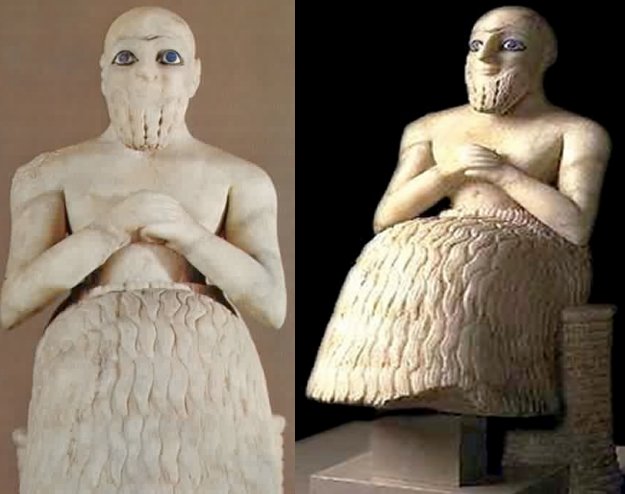Secrets Of Egyptian Blue – World’s Oldest Artificial Pigment And Its Extraordinary Properties
Ellen Lloyd - AncientPages.com - Countless examples demonstrate how ancient civilizations were fascinated with the blue color. Blue was considered to be the color of the gods. Since heavenly deities were believed to reside in the heavens and blue, ancient people viewed blue as a sacred color.
The blue color is clearly visible on hieroglyphic carvings and paintings on the interior walls of ancient Egyptian temples. Credit: Adobe Stock - Kokhanchikov
Sumerians made several ancient statues of beings who had huge and blue eyes. These ancient statues were then placed in the high temple on top of the ziggurat. It seems clear that the eye motif on these figures was very significant to our ancestors. Similar ancient statues with blue eyes have been discovered in other parts of the world, such as Egypt, India, and South America.
Egyptian Blue Has Extraordinary Properties
The four historically most important 'blue pigments are Egyptian blue, lapis lazuli, azurite, and smalt.
However, Egyptian blue is the world's oldest artificial pigment. It appeared about 5,000 years ago in a tomb painting dated to the reign of Ka-sen, the last king of Egypt's First Dynasty.
Scientists have discovered that the Egyptian blue pigment has extraordinary properties and will enable us to reconstruct the past and possibly shape the technological future.
The material giving Egyptian blue its color is calcium copper silicate. It was made by grinding sand, lime, and copper (or copper ore) and heating the mixture in a furnace.
Ancient Sumerian statues with blue eyes. Image credit: Arts History Worlds - Read more
Egyptian blue was widely used in ancient times as a pigment in painting, such as in wall paintings, tombs, mummies' coffins, and a ceramic glaze known as Egyptian faience. Its use spread throughout Egypt, Mesopotamia, Greece, and the far reaches of the Roman Empire. The fact that it was not available naturally meant that its presence indicated a work with considerable prestige.
Once ancient people learned of Egyptian blue many started using it, and today, we can discover it on, for example, early medieval wall paintings in Rome. It was often used as a substitute for lapis lazuli, an extremely expensive and rare mineral sourced in Afghanistan.
Egyptian blue "remained prevalent until the beginning of the Middle Ages, but it not possible to establish an exact date for its disappearance from use. It has been hypnotized that the employment of this pigment became less frequent around the fourth and fifth centuries AD, surviving only in peripheral areas such as central and southern Italy. Until the 1990s, it was generally accepted that the latest paintings where Egyptian blue has been identified are those on the walls of the lower basilica of San Clemente in Rome, which have been dated to around the middle of the ninth century AD." 1
After the fall of the Roman Empire, the oldest blue in history was lost and replaced by lapis lazulli.
"One person who understood the secrets of Egyptian blue was the great Renaissance Genius Raphael who used the artificial pigment to achieve the intense blue of the sky and sea in his famed Triumph of Galatea in Rome's Villa Farnesina. According to a study, Raphael carried out a unique experiment in his workshop and used the color in the masterpiece painted onto the walls of the then luxury Palazzo Chigi." 2
Modern Use Of Egyptian Blue
When irradiated with visible light, scientists have noticed that Egyptian blue emits near-infrared rays with exceptional strength, with even single particles of the pigment detectable from a distance of a few yards.
This suggests Egyptian blue could have a variety of modern applications. For example, it could soon be used in advanced biomedical engineering. Expanding on the ancient Egyptian concept with the pigment's near-infrared-emitting property, scientists can also use it as a nano-ink.
The fact that the secret powder of Pharaohs emits infrared radiation when exposed to a certain kind of light and has unusual properties can help forensics forensic experts solving crimes .
When forensic experts arrive at a crime scene, they dust relevant surfaces with a powder of a contrasting color that sticks to the fingerprints left there. One of the problems is that fingerprints may be hard to pick out on a shiny or highly patterned surface.
Egyptian blue can be used when conventional means are unsuccessful. Scientists have also discovered ancient Egyptian blue can be used to create new nanomaterial that is 100,000 times thinner than a human hair.
So, Egyptian blue is undoubtedly more than just a color.
Though we today credit ancient Egyptians with the invention of the world's oldest artificial pigment, we should not forget ancient civilizations on the other side of the world were just as fond of the blue color as Egyptians.
The Maya Blue (azul maya in Spanish) has been discovered at several architectural locations from the ancient Mayan civilization, including the archaeological site of Cacaxtla on the Mural de la batalla.
This pigment was named Maya blue because it was thought to exist only in the Yucatan Maya area. Today, it is known that there are murals with Maya Blue in various parts of Mesoamerica, as in the Tajin, Tamuín, Cacaxtla, Tenochtitlan (Templo Mayor), Zaachila, Tula, and other parts of Central America. The pigment has also been found on palace walls, ceramics, codices, sculptures, and even the bodies of human sacrifices.
Maya blue first appeared around 800 and was still used in the 16th century.
The recipe and process for preparing Maya Blue, a highly-resistant pigment used for centuries in Mesoamerica, were lost. Credit: Constantino Reyes - Public Domain
The Maya Blue has been a scientific puzzle mainly due to its unusual chemical composition. Maya blue is a highly resistant artificial pigment. Despite the time and the harsh weathering conditions, paintings colored in Maya blue have not faded over time. However, the blue dye could be destroyed with intense acid under reflux. Could the answer to the secret ingredient for Maya Blue be hidden in the composition of the ancient Egyptian blue pigment?
Updated on October 27, 2024
Written by Ellen Lloyd – AncientPages.com
Copyright © AncientPages.com All rights reserved. This material may not be published, broadcast, rewritten or redistributed in whole or part without the express written permission of AncientPages.com
Expand for references- Gaetani, Maria Carolina, Ulderico Santamaria, and Claudio Seccaroni. "The Use of Egyptian Blue and Lapis Lazuli in the Middle Ages: The Wall Paintings of the San Saba Church in Rome." Studies in Conservation49, no. 1 (2004): 13-22.
- Jan Bartek - Fresco Reveals Renaissance Genius Raphael Used Egyptian Blue – World's Oldest Artificial Pigment, AncientPages.com
More From Ancient Pages
-
 Erik The Red: Famous Viking Outlaw Who Colonized Greenland And Was Father Of Leif Erikson
Featured Stories | Jun 16, 2020
Erik The Red: Famous Viking Outlaw Who Colonized Greenland And Was Father Of Leif Erikson
Featured Stories | Jun 16, 2020 -
 On This Day In History: First Siege Of Rome Began – On March 2, 537
News | Mar 2, 2017
On This Day In History: First Siege Of Rome Began – On March 2, 537
News | Mar 2, 2017 -
 Mysterious Ichthys – Ancient Secret Christian Symbol With A Deep Meaning
Ancient Symbols | Mar 6, 2018
Mysterious Ichthys – Ancient Secret Christian Symbol With A Deep Meaning
Ancient Symbols | Mar 6, 2018 -
 Mystery Of The 3,500-Year-Old ‘Screaming Woman’ Mummy Solved
Archaeology | Aug 9, 2024
Mystery Of The 3,500-Year-Old ‘Screaming Woman’ Mummy Solved
Archaeology | Aug 9, 2024 -
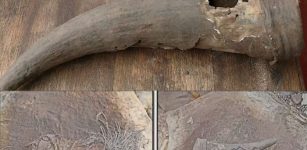 Unusual Parcel With 500-Year-Old Horn Container Discovered In South Africa Sheds Light On Pre-Colonial Khoisan Medicines
Featured Stories | Feb 15, 2023
Unusual Parcel With 500-Year-Old Horn Container Discovered In South Africa Sheds Light On Pre-Colonial Khoisan Medicines
Featured Stories | Feb 15, 2023 -
 Climate Played A Crucial Role In Human Migration From Africa – New Study
Archaeology | Dec 8, 2023
Climate Played A Crucial Role In Human Migration From Africa – New Study
Archaeology | Dec 8, 2023 -
 Pharaoh Ramses Was Not One Of History’s Greatest Generals – New Study Ruins His Formidable Reputation
Archaeology | Jan 31, 2018
Pharaoh Ramses Was Not One Of History’s Greatest Generals – New Study Ruins His Formidable Reputation
Archaeology | Jan 31, 2018 -
 Your Destiny Is Engraved And Stored – Guardians Of The Great Mystery – Part 2
Ancient and Unexplained Mysteries Library - Premium Content Preview | Jul 11, 2018
Your Destiny Is Engraved And Stored – Guardians Of The Great Mystery – Part 2
Ancient and Unexplained Mysteries Library - Premium Content Preview | Jul 11, 2018 -
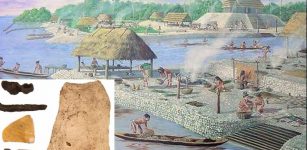 Location Of Elusive Spanish Fort Is Now Verified By Florida And Georgia Archaeologists
Archaeology | Apr 24, 2020
Location Of Elusive Spanish Fort Is Now Verified By Florida And Georgia Archaeologists
Archaeology | Apr 24, 2020 -
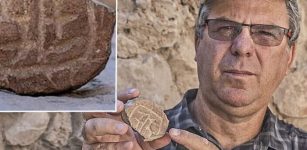 A Seal Impression Dated To Persian Period Discovered In The City Of David
Archaeology | Jul 3, 2020
A Seal Impression Dated To Persian Period Discovered In The City Of David
Archaeology | Jul 3, 2020 -
 Strange Ancient Artifact Found In New Jersey May Be Evidence Of A Long-Lost Advanced Civilization
Featured Stories | Jun 27, 2024
Strange Ancient Artifact Found In New Jersey May Be Evidence Of A Long-Lost Advanced Civilization
Featured Stories | Jun 27, 2024 -
 Steamship SS Mesaba Sent Warning To RMS Titanic In 1912 – Her Wreck is Now Identified
Archaeology | Sep 27, 2022
Steamship SS Mesaba Sent Warning To RMS Titanic In 1912 – Her Wreck is Now Identified
Archaeology | Sep 27, 2022 -
 Dangerous Anomaly Inside Mysterious European Mountain Remains Unexplained – Unusual Ancient Connections – Part 1
Ancient and Unexplained Mysteries Library - Premium Content Preview | Mar 13, 2021
Dangerous Anomaly Inside Mysterious European Mountain Remains Unexplained – Unusual Ancient Connections – Part 1
Ancient and Unexplained Mysteries Library - Premium Content Preview | Mar 13, 2021 -
 On This Day In History: The Battle Of The Nile Concludes In A British Victory – On August 2, 1798
News | Aug 2, 2016
On This Day In History: The Battle Of The Nile Concludes In A British Victory – On August 2, 1798
News | Aug 2, 2016 -
 New Paintings And Details Uncovered In The Egyptian Temple Of Esna
Places | Oct 22, 2024
New Paintings And Details Uncovered In The Egyptian Temple Of Esna
Places | Oct 22, 2024 -
 Antisthenes And Diogenes – Founders Of Cynicism Were Ancient Greek Philosophers
Ancient History Facts | Jan 7, 2018
Antisthenes And Diogenes – Founders Of Cynicism Were Ancient Greek Philosophers
Ancient History Facts | Jan 7, 2018 -
 Migrants From Turkey And Greece Arrived In Britain Some 6,000 Years Ago
Archaeology | Apr 16, 2019
Migrants From Turkey And Greece Arrived In Britain Some 6,000 Years Ago
Archaeology | Apr 16, 2019 -
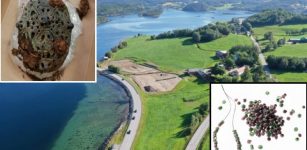 Hundreds Of Highly Unusual Burial Gifts Found In Special Viking Chamber Belonging To Woman In Norway
Archaeology | Nov 26, 2020
Hundreds Of Highly Unusual Burial Gifts Found In Special Viking Chamber Belonging To Woman In Norway
Archaeology | Nov 26, 2020 -
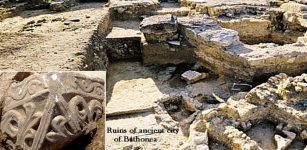 Excavations In Ancient City Of Bathonea Reveal Traces Of Viking Settlement
Archaeology | Aug 27, 2020
Excavations In Ancient City Of Bathonea Reveal Traces Of Viking Settlement
Archaeology | Aug 27, 2020 -
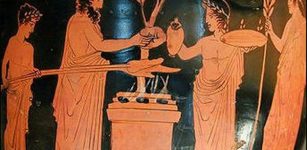 What Was The Role Of The Priests And Priestesses In Ancient Greece?
Ancient History Facts | Jul 27, 2016
What Was The Role Of The Priests And Priestesses In Ancient Greece?
Ancient History Facts | Jul 27, 2016


